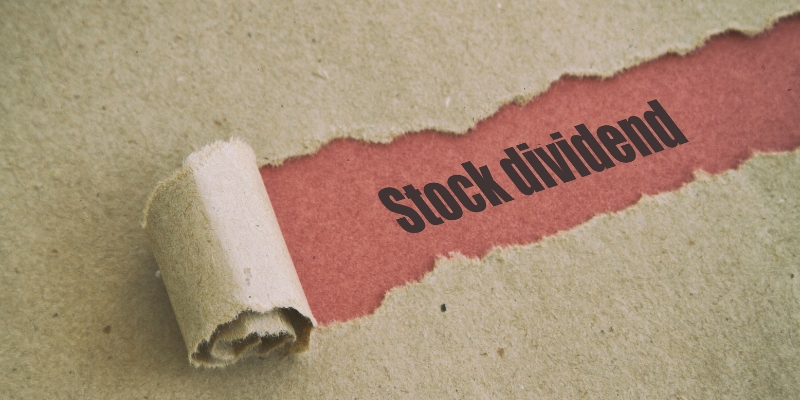The Art of Living Off Dividends: A Path to Financial Freedom
Nov 14, 2023 By Rick Novak
Imagine a stream of money flowing into your bank account, not from a job, but from intelligent choices you made in the past—that's the concept of living off dividends. Dividends are payments companies send to their shareholders, a share of the profits for owning a part of the company. For some savvy investors, these payments can grow large enough to cover living expenses, allowing them to rely less on a traditional paycheck.
The use of dividends as a source of income is like planting a garden of money trees: it takes time and care to grow, but once mature, it can yield a continuous harvest that can fund your lifestyle. That's the essence of living off dividends—it's about building a portfolio of investments that work for you, turning the stock market into a personal ATM that can support you daily.
The Attraction of Dividend Income
Passive Income: There's a significant allure in earning income passively. Dividends provide financial benefits without the necessity of active labor.
Capital Growth: Dividends offer a dual advantage; if not required for immediate expenses, they can be reinvested to purchase additional shares, which may, in turn, yield further dividends, setting a cycle of growth in motion.
Financial Stability: Regular dividend payouts often indicate a company's robust financial health, inspiring confidence in the sustainability of one's investments.
Tax Efficiency: Dividend income frequently benefits from lower taxation rates than earned income, presenting a tax-advantaged approach to increasing one's earnings.
Inflation Hedging: With the rising cost of living, dividends that increase over time can offer a buffer against inflation, ensuring that purchasing power is not eroded.
Living off dividends can be likened to cultivating a financial ecosystem that provides for one's necessities without depleting the underlying capital base—the proverbial "money tree" that supports a person's economic well-being.
How Do Dividends Work?
It's pretty simple: if you own shares in a company that pays dividends, you get a small amount of money regularly, usually every three months. It's like getting a little gift for staying invested in the company.
Types of Investments That Pay You Back
Stocks: When you buy a share, you own a tiny part of a company. Some of these companies say "thank you" by giving you a bit of their profits now and then. This thank-you money is called a dividend.
Mutual Funds: Imagine a big pot where you mix many different shares. This is known as a mutual fund. When any claim in this pot gives out dividends, you get a piece of that, too.
ETFs (Exchange-Traded Funds): These are special shares you can buy and sell quickly, just like trading cards, but on a computer. They are called ETFs. When they make money, you get some of it as dividends.
REITs (Real Estate Investment Trusts): There are companies whose whole job is to own buildings that make money, like shopping centers or apartment blocks. They share most of the rent from these buildings with you as dividends.

The Power of Dividend Investing
Over time, dividends can significantly contribute to the total return of your investment portfolio. They represent a share of company profits and signify a corporation's health and stability. Historically, dividends have played a vital role in investors' returns from the stock market.
Building a Dividend Portfolio
To live off dividends, you need to build a robust portfolio. Select stocks with a strong history of dividend payments and growth. Look for 'Dividend Aristocrats' or 'Dividend Kings,' companies with a history of increasing their dividends annually for 25 years or more. Diversification across different sectors and types of dividend stocks is crucial to reduce risk.
Financial Planning for Dividend Investors
Determine how much income you need annually and plan your investments accordingly. Calculate the yield required from your dividend investments to cover your expenses. Consider creating a buffer for inflation and unexpected costs. Be aware of the tax implications of dividend income and plan your finances to minimize taxes.
Risk Management
Investing carries risks, including the potential reduction or discontinuation of dividends. Regularly review and adjust your portfolio to mitigate risks to maintain a healthy balance between high-yield and growth-oriented stocks. Also, watch company fundamentals to ensure your investments remain sound.
Strategies to Maximize Dividend Returns
Maximizing your dividend returns is essential to ensure a steady income stream that could cover your living expenses. Here are three strategies to help you grow your dividend income over time.
1. Reinvesting Dividends through DRIPs
A Dividend Reinvestment Plan (DRIP) is a powerful tool to increase your investment without additional out-of-pocket expenses. When you reinvest dividends, you purchase more shares of the stock that paid the premium. Over time, this compounding effect can significantly increase your portfolio's value and the total dividends you receive.
2. Timing and Frequency of Dividend Payouts
Understanding when companies pay out dividends and how often can help you manage your cash flow better. Some companies pay dividends quarterly, while others pay monthly or semi-annually. By structuring your portfolio with a mix of companies that pay out at different times, you can create a more consistent income stream throughout the year.
3. Portfolio Rebalancing Technique
Rebalancing your portfolio regularly is crucial to maintaining the desired asset allocation. This process involves selling off investments exceeding your target allocation and buying more of those falling below your target. It helps take profits from your winners and reinvest in underperforming assets, leading to higher yields and better diversification.
By reinvesting dividends, timing your cash flows, and keeping your portfolio balanced, you can work towards maximizing your dividend returns and achieving financial stability.

Tools and Resources for Dividend Investors
Leveraging the right tools and resources is critical for dividend investors aiming to optimize their portfolios. Here's how you can enhance your investing strategy and stay informed.
1. Dividend Yield Calculators
Calculating the yield of your investments is crucial to understanding their performance. Dividend yield calculators are simple yet invaluable tools for this purpose. By inputting the annual dividend and the stock price, you can determine the yield percentage, which helps compare the performance of different dividend-paying stocks.
2. Portfolio Trackers
Portfolio trackers are instrumental in monitoring your investments. These digital tools can track the performance of your stocks, the total dividends received, and upcoming dividend payments. They often visually represent your investments, making it easier to assess your portfolio's health.
3. Investment Apps
In the digital age, investment apps have become a mainstay for savvy investors. They allow you to trade stocks, set up DRIPs, and manage your investments. Many apps also offer educational resources and real-time news to inform investment decisions.
4. Financial News and Websites
Staying updated with the latest market trends and company news is essential. Financial news services and dedicated dividend investing websites can offer insights into dividend declarations, changes in company policies, and market analysis that could impact your investment decisions.
By using these tools and resources, you can maintain a well-managed and informed investment strategy, helping you to maximize your dividend returns and work towards financial independence.
Conclusion
Achieving the goal of living off dividends is akin to planting a garden; it requires preparation, maintenance, and patience. The seeds are your initial investments in carefully chosen dividend-paying stocks. As you nurture your portfolio with regular reviews and rebalancing, it can grow into a robust source of income. The key to success is an understanding of dividends, a commitment to diversifying your holdings, and a vigilant eye on market changes to manage risks effectively.
Living off dividends is more than just an investment strategy; it's a lifestyle choice emphasizing financial intelligence and foresight. With the right mindset and resources, the dream of funding your life through dividends becomes a reality, providing the financial freedom to enjoy the fruits of your investment labor.

Rick Novak Nov 16, 2023

Kelly Walker Nov 14, 2023

Kelly Walker Nov 14, 2023

Rick Novak Nov 15, 2023

Rick Novak Nov 15, 2023

Kelly Walker Nov 15, 2023
